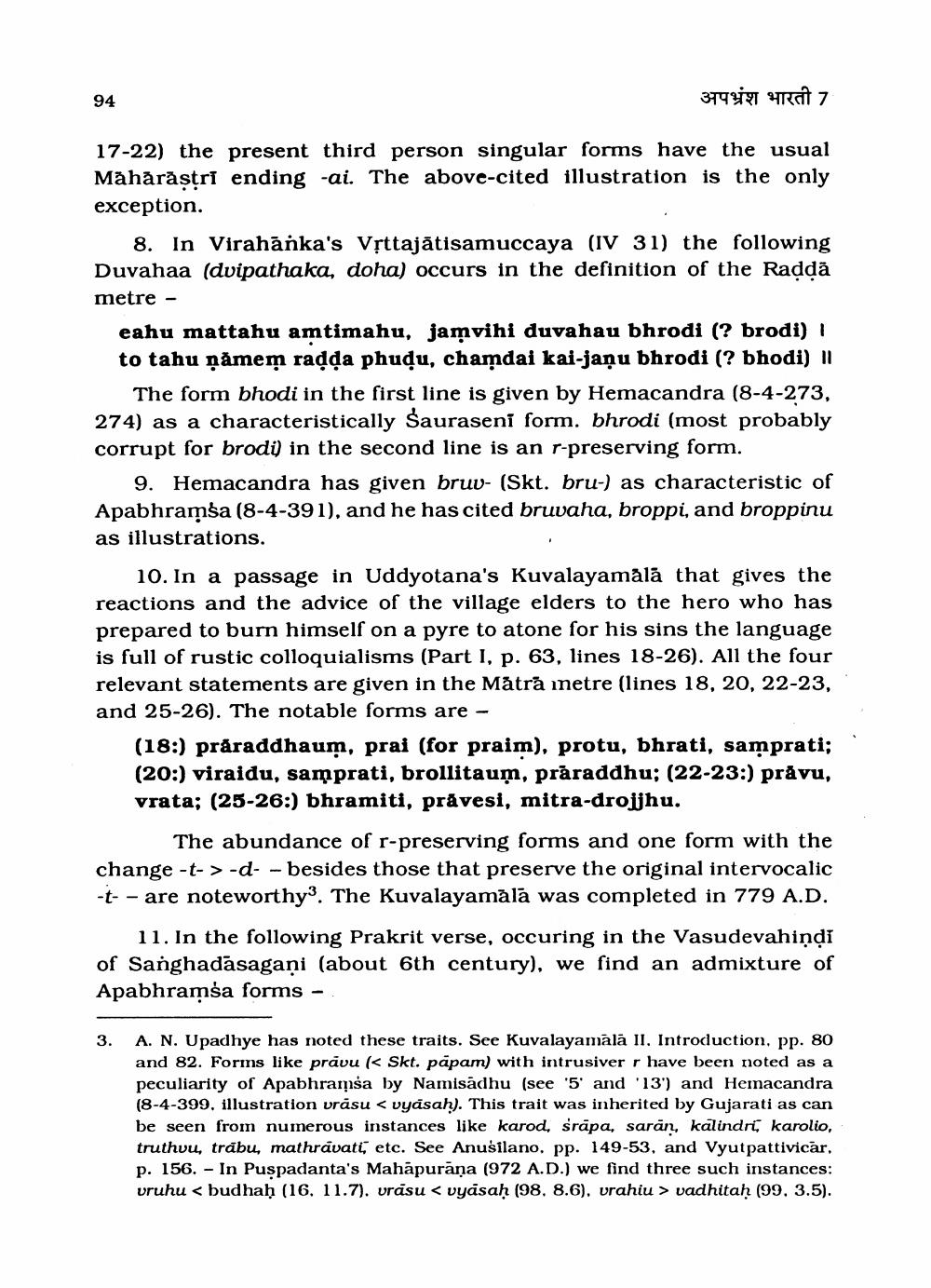________________
94
अपभ्रंश भारती7
17-22) the present third person singular forms have the usual Maharastri ending -ai. The above-cited illustration is the only exception.
8. In Virahanka's Vșttajātisamuccaya (IV 31) the following Duvahaa (dvipathaka, doha) occurs in the definition of the Radda metre -
eahu mattahu amtimahu, jamvihi duva hau bhrodi (? brodi) 1 to tahu ņåmem radda phudu, chamdai kai-jaņu bhrodi (? bhodi) 11
The form bhodi in the first line is given by Hemacandra (8-4-273, 274) as a characteristically Sauraseni form. bhrodi (most probably corrupt for brodi) in the second line is an r-preserving form.
9. Hemacandra has given bruu- (Skt. bru-) as characteristic of Apabhramsa (8-4-391), and he has cited bruvaha, broppi, and broppinu as illustrations.
10. In a passage in Uddyotana's Kuvalayamala that gives the reactions and the advice of the village elders to the hero who has prepared to burn himself on a pyre to atone for his sins the language is full of rustic colloquialisms (Part I, p. 63, lines 18-26). All the four relevant statements are given in the Mătră inetre (lines 18, 20, 22-23, and 25-26). The notable forms are -
(18:) praraddhaum, prai (for praim), protu, bhrati, samprati; (20:) viraidu, samprati, brollitaum, prăraddhu; (22-23:) prăvu, vrata; (25-26:) bhramiti, právesi, mitra-droijhu.
The abundance of r-preserving forms and one form with the change-t->-d--besides those that preserve the original intervocalic -t -are noteworthyo. The Kuvalayamala was completed in 779 A.D.
11. In the following Prakrit verse, occuring in the Vasudevahindi of Sanghadāsagani (about 6th century), we find an admixture of Apabhramsa forms -
3.
sa by Namn). This trait Wśrápa, s
A. N. Upadhye has noted these traits. See Kuvalayamālā II. Introduction, pp. 80 and 82. Forms like prāvu (< Skt. papam) with intrusiver r have been noted as a peculiarity of Apabhramsa by Namisādhu (see '5' and '13') and Hemacandra (8-4-399, illustration vråsu < vyásah). This trait was inherited by Gujarati as can be seen from numerous instances like karod, srāpa, saran, kalindri karolio, truthvu, trabu, mathrávatc etc. See Anušilano, pp. 149-53, and Vyutpattivicar, p. 156. - In Puspadanta's Mahapurāņa (972 A.D.) we find three such instances: uruhu < budhaḥ (16. 11.7). vrásu < vyasaḥ (98, 8.6), urahiu > vadhitaḥ (99, 3.5).




